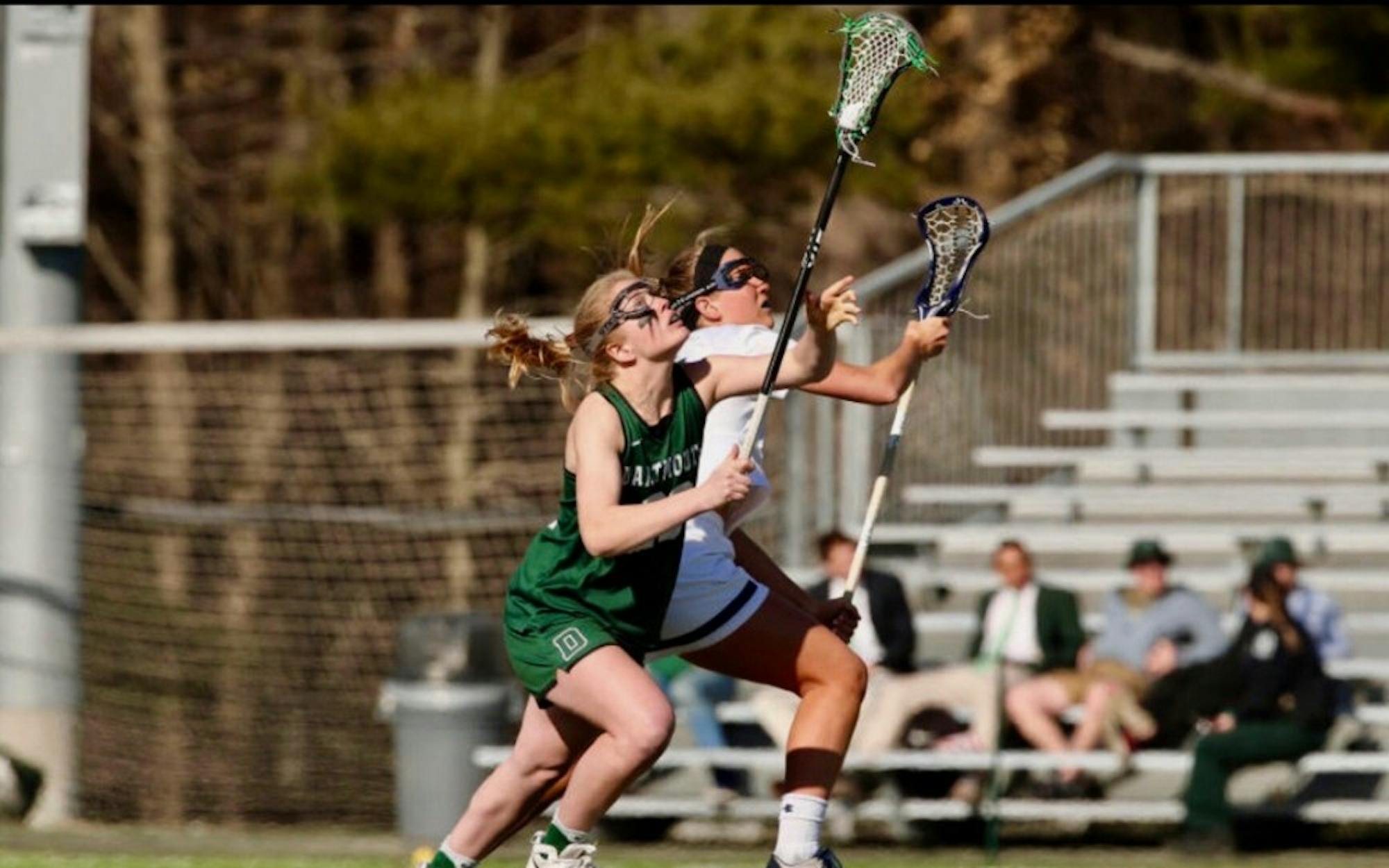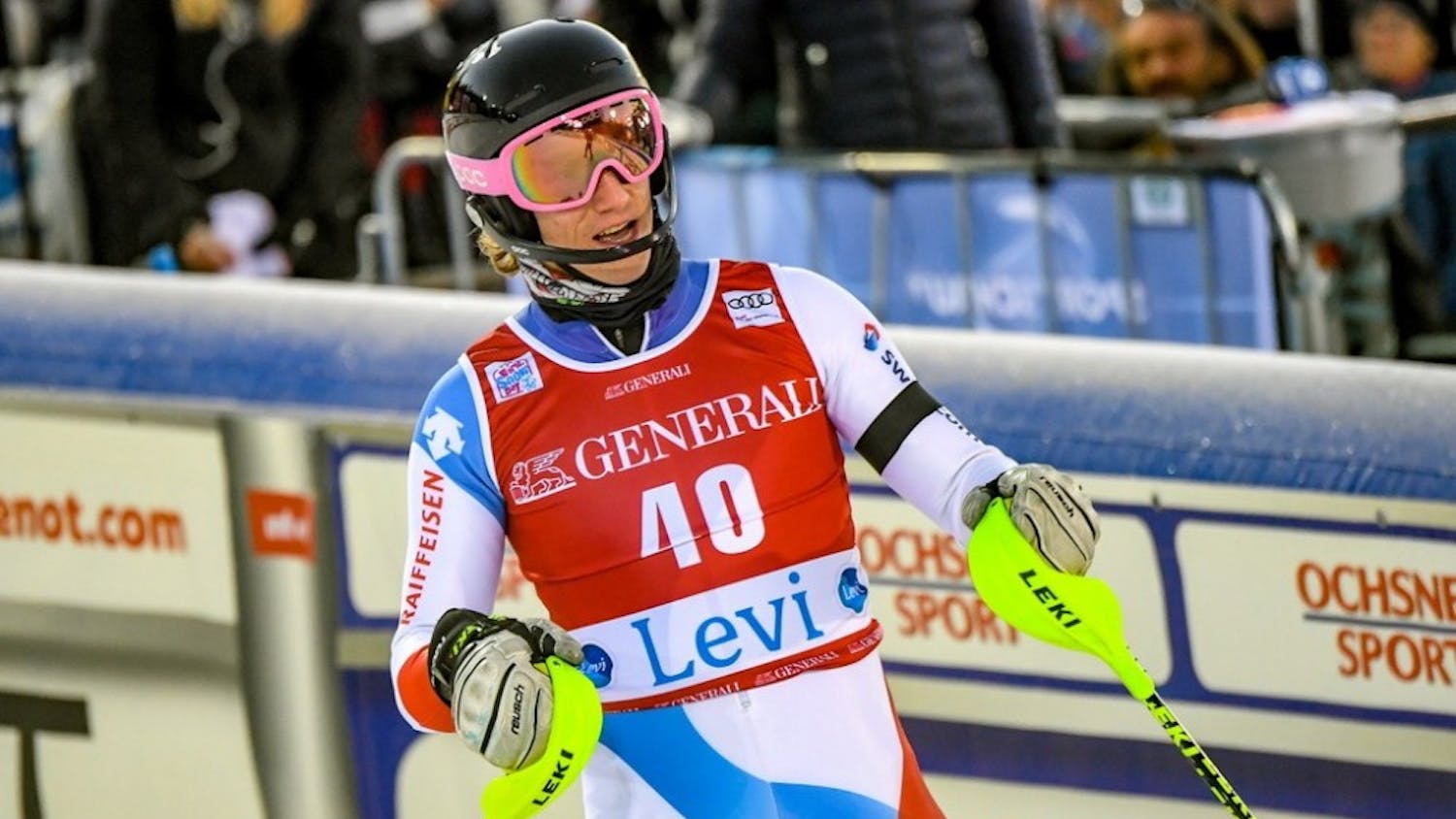Kathryn Giroux ’19 finished her collegiate career 11th all-time in NCAA history with 418 draws, but she did not even begin to focus on that aspect of the game until her sophomore year at Dartmouth. Head coach Danielle Spencer, who took the draw during her career at Northwestern University, imparted her knowledge upon Giroux during her first year with the Big Green in 2017. Spencer — who was named the co-Ivy League Coach of the Year for the second consecutive season earlier this month — has seen Giroux transform into the best draw-taker in Ivy League history. This year, Giroux was one of six unanimous selections to the All-Ivy First Team after earning Second Team honors in the previous two seasons.
How did you first become interested in the sport of lacrosse?
KG: I started playing around third grade. It’s a thing in my town; everyone played lacrosse. I have some good family friends who are older than me who got recruited to play lacrosse in college, so I looked up to them. Two of them ended up playing lacrosse at Dartmouth, so I saw older girls from my town who were becoming really successful at the sport, and it was becoming more popular in my area. I obviously realized that I loved the game and was also seeing some success myself.
When did you first think you would play college lacrosse?
KG: Going into high school recruiting was really early. They recently changed recruiting rules, but when I was in high school, I was being contacted my freshman year. At the end of eighth grade, I had to decide whether I wanted to continue playing summer lacrosse and go to recruiting tournaments or pursue something else. Having older girls from my school and town who were recruited to play lacrosse and seeing how they did it made me realize that it was an option and something that I wanted to do, too.
What went into your decision to come to Dartmouth?
KG: During my visit to Dartmouth, I loved the campus. As opposed to other schools, the girls on the team had things that they were interested in outside of lacrosse, so it seemed like they were getting a really well-rounded experience that wasn’t fully dominated by lacrosse. When I was being recruited, Dartmouth was the two-time Ivy champion and a top-10 team with a really prominent coaching staff. I could also feel the sense of family that the team had when I came on my visits.
What were your expectations and goals at the start of your Dartmouth career, and how did those change over time?
KG: Coming in as a freshman, you are playing against really good players and you’ve never seen that level of competition. I did not have any high expectations for myself during my freshman year. My goal was to learn as much as I could, work hard and get as much experience as I could. It turned out that I did get some playing time my freshman year, which was really cool, but our team did not see much success that year. At that point in my career, I didn’t even take the draw, which is basically my position now.
When did you start to focus on taking the draw? Was it something that you focused on in high school or developed when you came to Dartmouth?
KG: I took the draw in high school, but it wasn’t really a focus. I was more of a midfielder who also happened to take the draw. During my sophomore year, when Danielle Spencer became head coach, she put a strong emphasis on the draw because she had taken it in college. I started training for the draw with her, and that’s when I became good at the draw and started to take it for Dartmouth. We would spend hours of reps doing the draw, me against Spencer. She’s one of the best draw takers to ever play lacrosse, so it was really learning from her and having her train me through it that got me into the draw.
What does it feel like to end your college career as one of the best draw takers in NCAA history?
KG: That’s definitely really exciting. When you’re playing in the middle of the season, you try to not get wrapped up in stats or anything like that. Looking back now, it’s really cool, and I am really thankful that I had the opportunity to work with Spencer these last three years and perfect the craft. I’m also really lucky to have had teammates who were amazing circle girls. It was much more of a three vs. three game on the draw than a one vs. one game even though the stats don’t show that.
What makes the draw so important in the game of lacrosse?
KG: If you control the draw, you control the game. You can’t score unless you have the ball, so it puts you in a good position if you know you are going to get a lot of the possessions because that means you will have that many more opportunities to score. What we saw this season was that it’s hard for other teams’ defensive units to consistently stop the ball when they’re seeing that many of our attack possessions. It’s a really big momentum shifter. If we score and then I win the draw, the offense gets another opportunity to score right away and it’s pretty deflating for the other team.
What makes you so successful on the draw? What is your strategy when you take the draw?
KG: Having Spencer, one of the best draw control players ever, as your coach helps. Also, we go about the draw as a three-person unit. I’m working with the other two circle girls, and we are in constant communication because they’ll either be boxing out for me or they will go behind me and I’ll pull it behind me. Other teams have difficulty stopping us when we are on the same page.
How have you become a leader and mentor for other players, and how do you plan to pass on your ability to win draws to the younger players on the team?
KG: There are a few of us who take the draw in practice. Going up against them, honestly, they beat me a lot, so I think that’s part of what has made me so good. As a leader for me, what I want to pass on is telling the other draw takers what is working for me. We work together by sharing tips and also giving them confidence. They’ve gotten so many reps against [me] and I’ve been going 100 percent, so I hope that next year when I’m not there, they can feel confident going up against anyone else. I’m excited to see what we do on the draw next year.
This interview has been edited and condensed for clarity and length.



